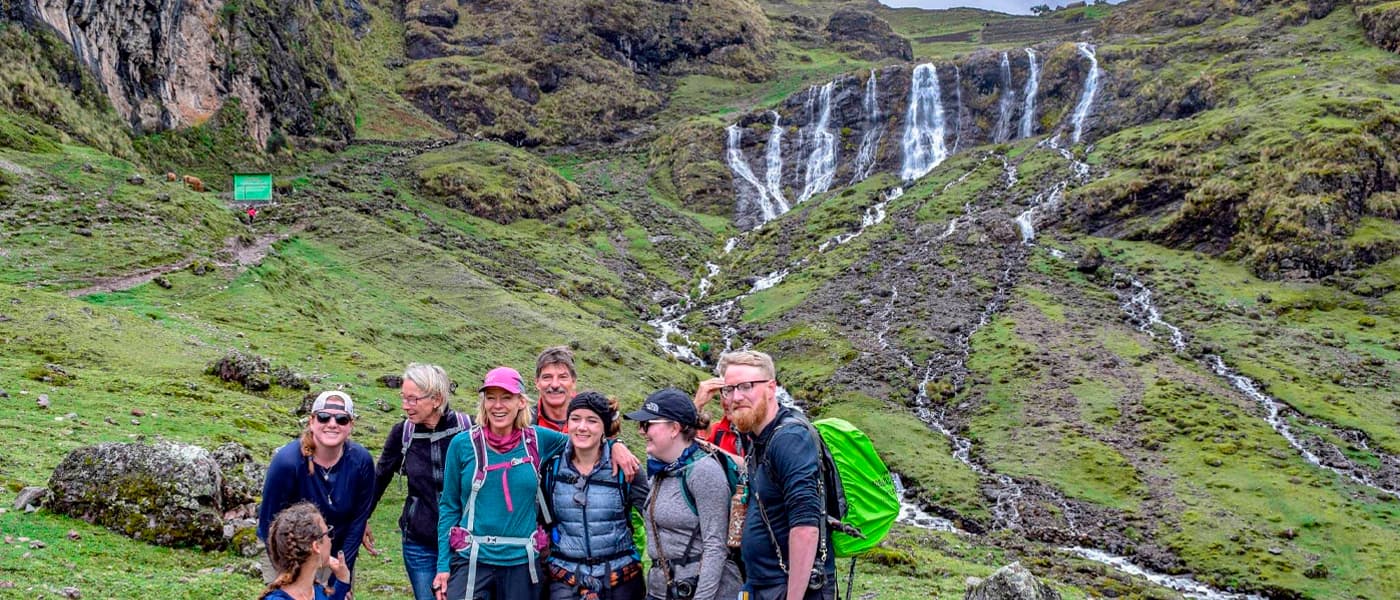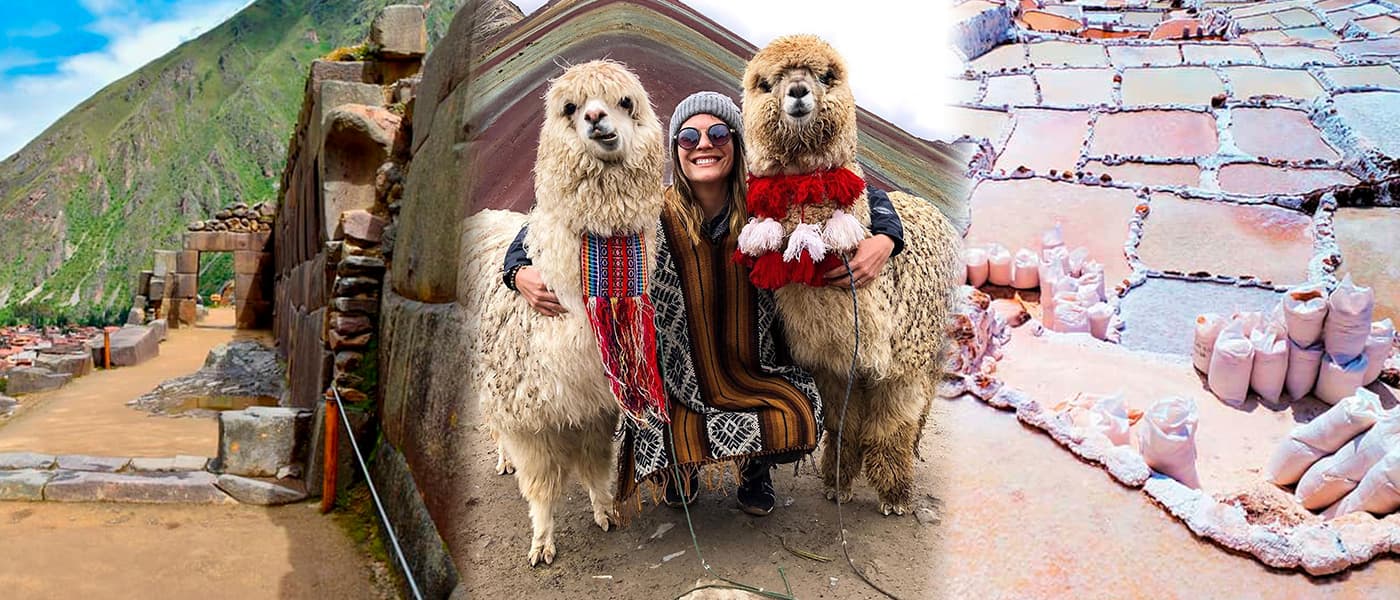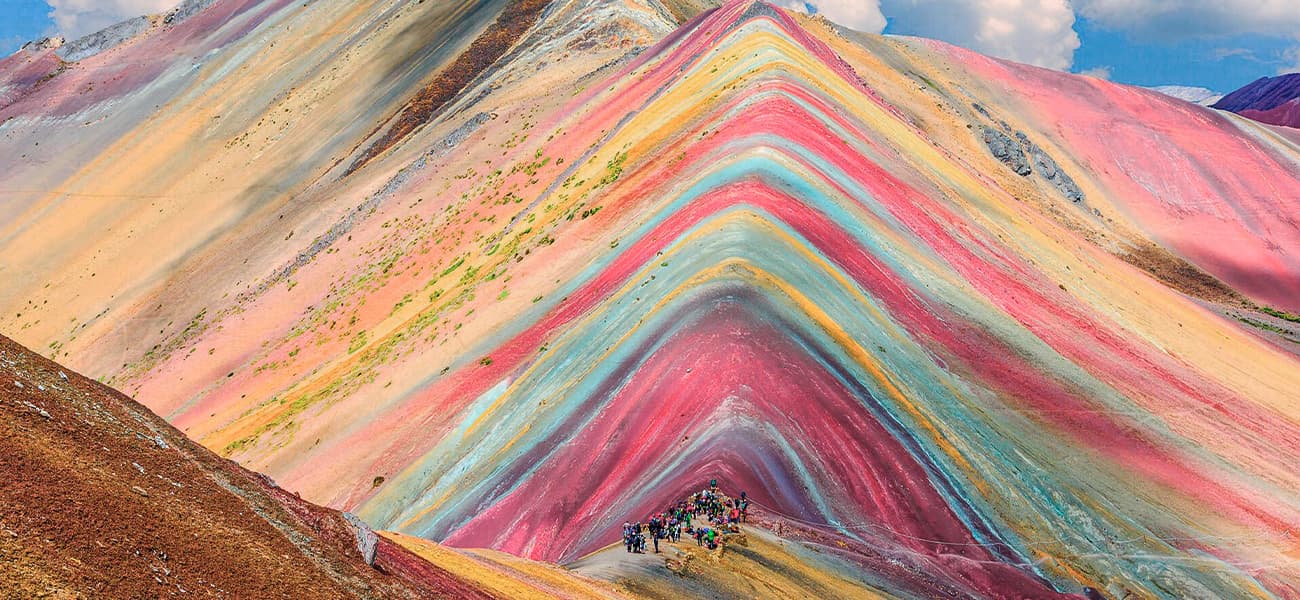The floating Islands of Uros in Lake Titicaca.
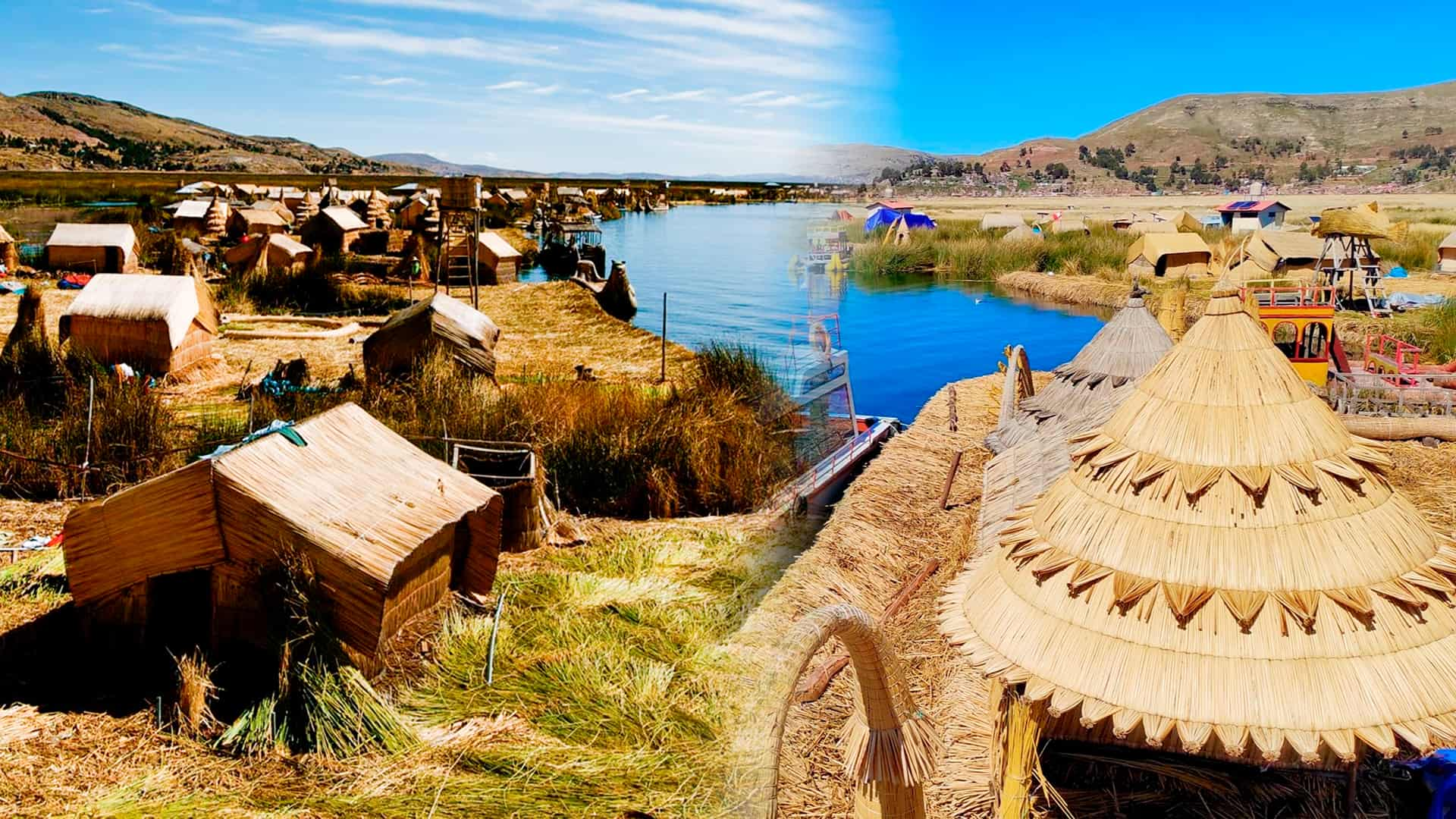
Lake Titicaca is home to the incomparable floating islands of Uros. The islands comprise of over 120 man-made floating islands that are constructed using totora reeds by the pre-Colombian civilization of the Uros people. The Uros people migrated from Bolivia and settled into the lake, near the city of Puno. The Uros people are made of three main groups, namely the Uru-Chipaya, Uru-Murato, and Uru-Uruito. See all of our tours to Lake Titicaca here!
The Urus people are an ancient tribe with a history that goes back more than 3000 years. Initially, their reed homes where built as a defense mechanism, so they could easily be moved if a threat arose. Today, the islands, the culture, and ancient customs attract thousands of visitors looking to explore and experience this fascinating and remarkable way of life.
History of the Uros People
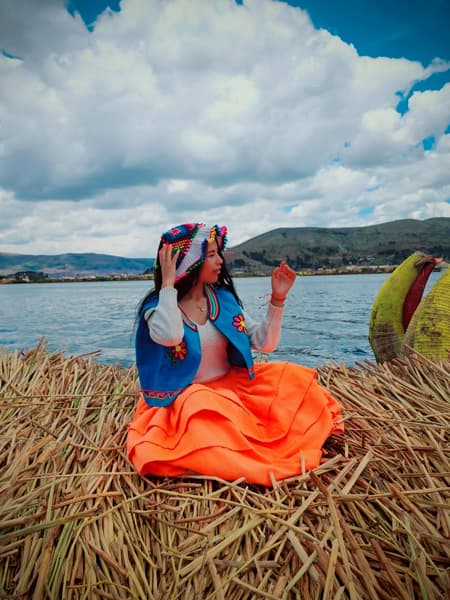
The Uros people are the descendants of the extinct Puquina language. Originally, their reed homes were built in the middle of the lake, until a great storm destroyed their homes and forced them to move closer to shore. According to Uros tradition, they predated all other humans on the lake and have lived here even before the birth of the sun itself on Isla del Sol. Another mythos is that they have black blood which protects them from the cold and drowning. Now, even for the non-believers, it is still amazing how they have such a highly unusual tolerance to the cold and harsh temperatures of the lake.
After many years of trading with the mainland Aymara tribe, they intermarried and eventually abandoned their own language for the Aymara language. Later, they were conquered by the powerful Inca Empire, whereby they had to pay taxes, with some falling victim to slavery. Despite everything they have been through, the Uros people still maintain their identity and old customs.
Traditional lifestyle of the Uros people
Mostly things for the Uros people revolve around the totora reeds. Food and medicine are sourced from the reeds. They also rely on the reeds to relieve them from hunger and the harsh climate of the highest navigable lake in the world. When they feel acute pain, they wrap the totora reed around the are with pain. To combat extreme heat, the reed is split open to expose the white center, they then place it on their forehead for an instant cooling effect. The reeds are also used to make a flowery tea, that´s supposedly a great hangover cure. The totora reeds are an integral part of Uros culture and life.
The islanders still maintain a mostly traditional diet, dominated by fish dishes. They local fish includes ispi, carachi and catfish. Since foreign fish like trout from Canada and kingfish from Argentina were introduced into the lake, they have also become a major source of nutrition for the locals.
Additionally, the locals adopted unique methods of fishing. They domesticated fish catching birds like cormorants and seabirds. They tie a foot from the bird with a string and when they catch fish, the bird returns with it for human consumption. Other birds are kept for their eggs and meat. The man are also hunters, focusing on seagulls, ducks and flamingoes. Finally, many locals have attained livestock like cattle, which graze on the islets.
Income on the Islands
The biggest source of income on the island is now tourism, which comes via boats from the city of Puno. They also trade their totora reeds on the mainland for staples like quinoa. Puno is the biggest producers of quinoa in Peru and the shores of Lake Titicaca are the birth place of this superfood.
Even though, it is estimated that there are almost 2 000 Uros descendants, only a few hundred are left on the island, to maintain their ancient way of life. These numbers are expected to dwindle even more with the upcoming generations. However, the many locals that now work on the mainland, financially support their families still living on the lake.
Finally, the islanders also have craft stalls targeted at the thousands of tourists that visit the islands annually. They have their own unique designs that are different from handicrafts found in other parts of Peru.
How do they build the Uros Floating Islands?
Firstly, the totora reeds are dried to start the construction of many different things, including their traditional boats called balsas.
To make an island, they create a base layer made of pallets of the floating totora roots abundant in the area. The reeds are anchored with ropes attached to large Eucalyptus poles driven into the bottom of the ocean. Multiple layers of the reeds are then added to form the island. Importantly, new layers are added frequently because the bottom layer rots quickly, especially the during rainy season. The layering takes place every 2 weeks to 3 months depending on the time of the year. Each island can last up to 30 years with constant maintenance.
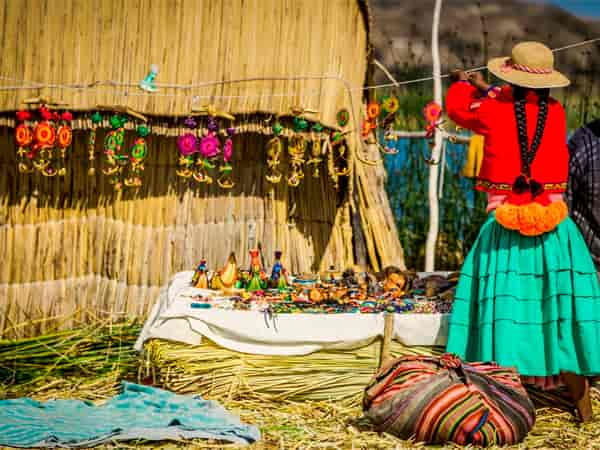
Amenities on the Uros Islands
Even though the Uros people maintain a traditional way of life, they are not averse to a few modern amenities. Many islands have installed sola panels which allow them to run appliances like TV´s, cellphones and a radio station from Puno that plays music throughout the day. Also available on islands is a kindergarten and an elementary school. Anything beyond that, the children have no choice but to move to the mainland.
In terms of cooking, they still prefer the more traditional way. Food is cooked in pots using pottery stoves. The stoves are placed on a flat stone to prevent the flammable reeds from catching fire. Toilets are tiny outhouses that flush and the waste is absorbed into the ground roots. The outhouses usually have an adjoining toilet and shower with a tiled roof. Attached are heating cells and a hot water boiler, so you can enjoy a warm shower in the frigid lake cold. The homes do not have insulation and those that welcome tourist overnight, provide extra blankets to keep you nice and toasty at night.
Typical Puno and Uros floating Island food
The Chairo: A delicious and thick local soup made from potatoes, black freeze-dried potatoes*, lamb meat and vegetables like carrots, onions, and broad beans and seasoning.
Quinoa Porridge (Pesque de Quinoa): As one of biggest producers of quinoa in the world. This quinoa dish is not to be missed. It contains milk, cheese, butter, salt and of course quinoa. It is sometimes served with a meat stew.
Alpaca Chicharron: Alpaca is one of the main delicacies to try while in Peru. In Puno they cut the alpaca into cubes and deep fry it. Its served with slices of fried potatoes, toasted corn and a creole salsa.
Quinoa Chowder (chupe de quinoa) : My second favorite dish in the region. It includes two of their most famous ingredients, fish and quinoa. Its made from broad beans, carrots, quinoa and some kind of seafood. The fish used is really unpredictable, essentially that days catch of the day is used.
Timpu de trucha: My personal absolute favorite. This is by far the most popular dish on the island. Its a humble broth that´s prepared in the simplest way possible. It therefore maintains its freshness, nutrients and natural flavor. It is simple fish broth with chuño*, trout fish or carachi, with spices like garlic and cumin and its served with boiled potatoes .
*Chuño or freeze dried potatoes – Its potatoes that go through a natural 5-day freeze-drying process. Freeze-drying has always been a great way to preserve potatoes. In this state that can last for a very long time, even decades.
Visiting the Floating Islands of Uros
For those asking themselves how to visit the floating islands of Uros, there are different ways to do so. Depending on the type of experience you’d like to have and travel schedule, you can visit this man made attraction with these options:
1.- Lake Titicaca Half-Day Tour
In case you’re limited on time but still want to see the best of Lake Titicaca during your short stay, here’s an option that can help you with that.
The Lake Titicaca Half-Day Tour: Will take you through the vast deep-blue waters of the world’s highest navigable lake, allowing you to explore the Uros islands and Taquile Island.
The experience can be arranged for a morning or afternoon schedule, giving you time to explore the city and two of the main attractions in the lake in one day.
Nowadays local people are offering lodging for tourists.
2.- Lake Titicaca Full-Day Tour
For those with a bit more time in Puno, here’s a boat tour that will take you through the cultural expression of Lake Titicaca in one day.
The full-day tour to Lake Titicaca: Will allow you to get immersed in this natural wonder and its main attractions. On this occasion, you’ll be able to get to know the renowned Taquile Island, the impressive Uros islands and one of the largest islands on the lake, Amantani.
You can see this unique package to Titicaca
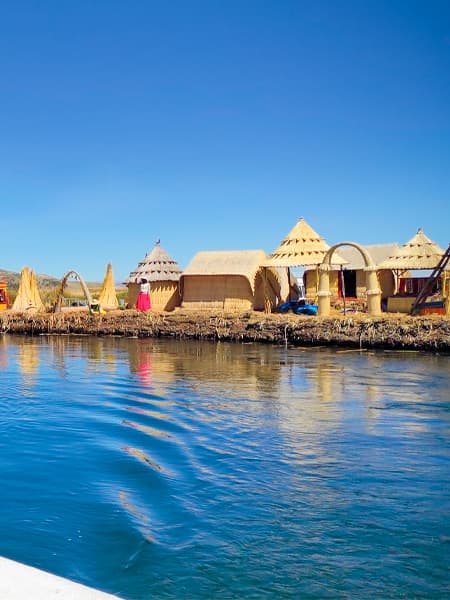
3.- Lake Titicaca Tour Homestay at Amantani Island 2 days
There’s a more intimate experience that takes you on a full immersion into the cultural heritage of the lake. On this occasion you can stay in one of the islands; Taquile and learn about their daily lives.
Lake Titicaca Homestay experience: You’ll get to explore Amantani, Taquile and the Uros islands. You’ll be able to be fully immersed in the traditions and customs of the place, as well as taking part in the routinary activities such as fishing, collecting totora reed and much more.
***Also, on the tour, you can hike up to the Pachatata temple, and enjoy the great views with SAM Corp.
See all the detailed information on our Inca Trail tours here!
